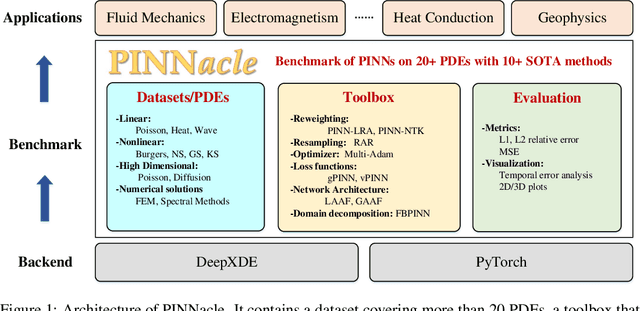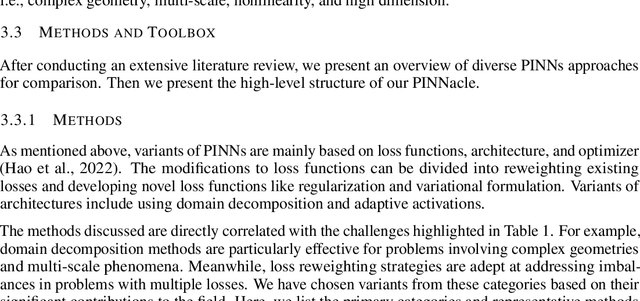Zeyu Xia
CAT: A Conditional Adaptation Tailor for Efficient and Effective Instance-Specific Pansharpening on Real-World Data
Apr 14, 2025Abstract:Pansharpening is a crucial remote sensing technique that fuses low-resolution multispectral (LRMS) images with high-resolution panchromatic (PAN) images to generate high-resolution multispectral (HRMS) imagery. Although deep learning techniques have significantly advanced pansharpening, many existing methods suffer from limited cross-sensor generalization and high computational overhead, restricting their real-time applications. To address these challenges, we propose an efficient framework that quickly adapts to a specific input instance, completing both training and inference in a short time. Our framework splits the input image into multiple patches, selects a subset for unsupervised CAT training, and then performs inference on all patches, stitching them into the final output. The CAT module, integrated between the feature extraction and channel transformation stages of a pre-trained network, tailors the fused features and fixes the parameters for efficient inference, generating improved results. Our approach offers two key advantages: (1) $\textit{Improved Generalization Ability}$: by mitigating cross-sensor degradation, our model--although pre-trained on a specific dataset--achieves superior performance on datasets captured by other sensors; (2) $\textit{Enhanced Computational Efficiency}$: the CAT-enhanced network can swiftly adapt to the test sample using the single LRMS-PAN pair input, without requiring extensive large-scale data retraining. Experiments on the real-world data from WorldView-3 and WorldView-2 datasets demonstrate that our method achieves state-of-the-art performance on cross-sensor real-world data, while achieving both training and inference of $512\times512$ image within $\textit{0.4 seconds}$ and $4000\times4000$ image within $\textit{3 seconds}$ at the fastest setting on a commonly used RTX 3090 GPU.
STAIR: Improving Safety Alignment with Introspective Reasoning
Feb 04, 2025



Abstract:Ensuring the safety and harmlessness of Large Language Models (LLMs) has become equally critical as their performance in applications. However, existing safety alignment methods typically suffer from safety-performance trade-offs and the susceptibility to jailbreak attacks, primarily due to their reliance on direct refusals for malicious queries. In this paper, we propose STAIR, a novel framework that integrates SafeTy Alignment with Itrospective Reasoning. We enable LLMs to identify safety risks through step-by-step analysis by self-improving chain-of-thought (CoT) reasoning with safety awareness. STAIR first equips the model with a structured reasoning capability and then advances safety alignment via iterative preference optimization on step-level reasoning data generated using our newly proposed Safety-Informed Monte Carlo Tree Search (SI-MCTS). We further train a process reward model on this data to guide test-time searches for improved responses. Extensive experiments show that STAIR effectively mitigates harmful outputs while better preserving helpfulness, compared to instinctive alignment strategies. With test-time scaling, STAIR achieves a safety performance comparable to Claude-3.5 against popular jailbreak attacks. Relevant resources in this work are available at https://github.com/thu-ml/STAIR.
PINNacle: A Comprehensive Benchmark of Physics-Informed Neural Networks for Solving PDEs
Jun 15, 2023



Abstract:While significant progress has been made on Physics-Informed Neural Networks (PINNs), a comprehensive comparison of these methods across a wide range of Partial Differential Equations (PDEs) is still lacking. This study introduces PINNacle, a benchmarking tool designed to fill this gap. PINNacle provides a diverse dataset, comprising over 20 distinct PDEs from various domains including heat conduction, fluid dynamics, biology, and electromagnetics. These PDEs encapsulate key challenges inherent to real-world problems, such as complex geometry, multi-scale phenomena, nonlinearity, and high dimensionality. PINNacle also offers a user-friendly toolbox, incorporating about 10 state-of-the-art PINN methods for systematic evaluation and comparison. We have conducted extensive experiments with these methods, offering insights into their strengths and weaknesses. In addition to providing a standardized means of assessing performance, PINNacle also offers an in-depth analysis to guide future research, particularly in areas such as domain decomposition methods and loss reweighting for handling multi-scale problems and complex geometry. While PINNacle does not guarantee success in all real-world scenarios, it represents a significant contribution to the field by offering a robust, diverse, and comprehensive benchmark suite that will undoubtedly foster further research and development in PINNs.
 Add to Chrome
Add to Chrome Add to Firefox
Add to Firefox Add to Edge
Add to Edge